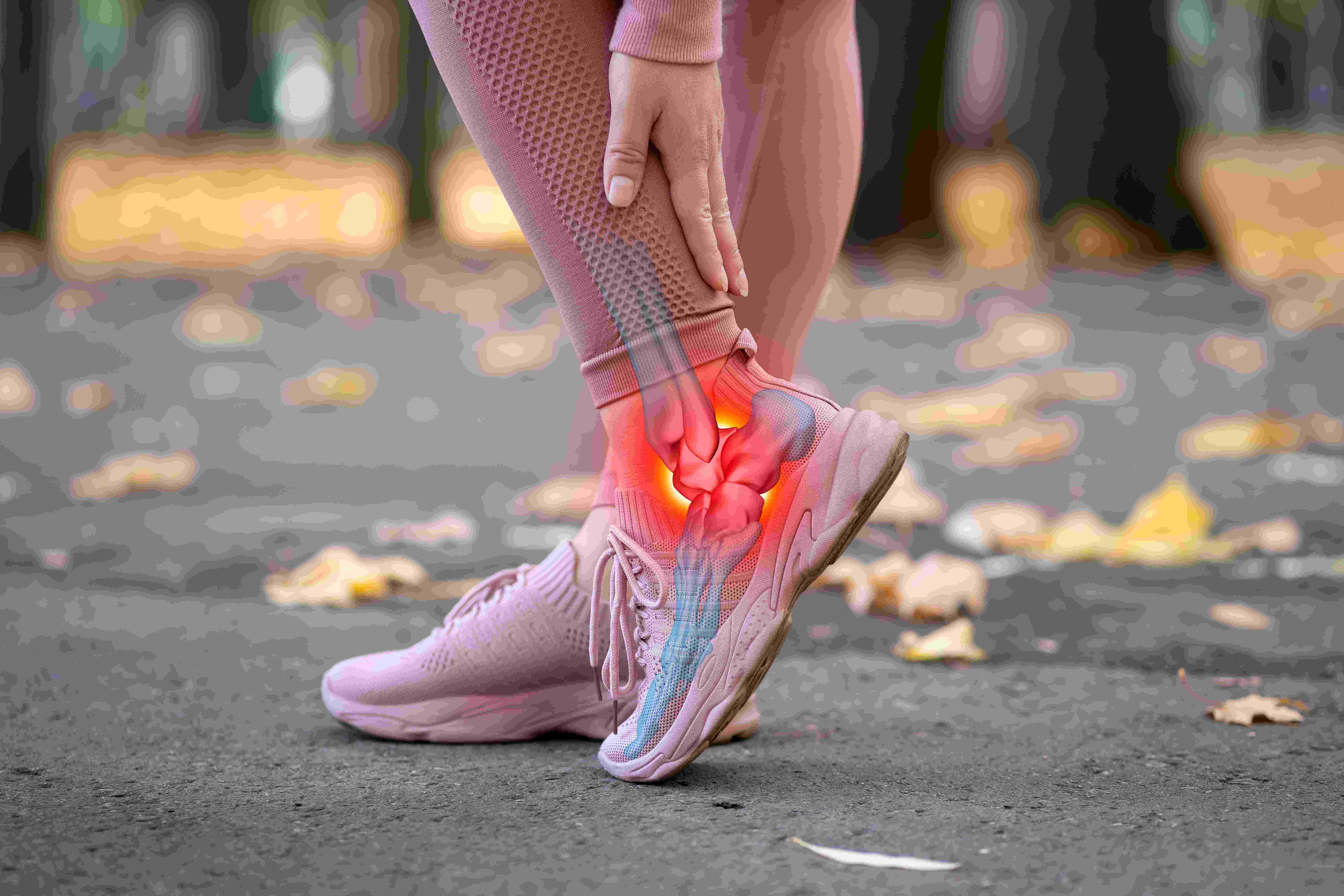Achilles Tendinitis: Achilles Tendon Pain & Treatment
Written By: Dr. Mohamed Ghanem
Updated On:January 28, 2025

What is Achilles Tendinitis?
Achilles tendinitis is an overuse injury of the Achilles tendon, which links the muscles of your calf to your heel. Achilles tendinitis most frequently affects runners who have abruptly increased their run length or intensity. Middle-aged people who only participate in sports like basketball or tennis are also prone to this.
While most cases of Achilles tendinitis can be treated at home and with some self-care tips, Achilles tendon ruptures (tendon rips) can result from more severe occurrences of the condition and could need to be repaired surgically.
Causes of Achilles Tendinitis
Overuse of the Achilles tendon results in Achilles tendinitis and produces swelling, irritation, and inflammation. Being active on your feet for long periods of time might cause Achilles tendonitis, which typically occurs as a result of constantly overstressing the tendon and is not tied to a specific injury. The body doesn't have time to mend the damaged tissue because it's challenging to avoid using the Achilles.
Age-related structural weakening of the Achilles tendon makes it more prone to injury, especially in persons who do sports exclusively on the weekends or who have abruptly increased the intensity of their running regimens.
Symptoms of Achilles Tendinitis
When jogging or engaging in other physical activity, Achilles tendinitis pain frequently starts as a minor soreness at the back of the leg or above the heel. When running, climbing stairs, or sprinting for an extended period of time, more intense pain episodes may happen. Tenderness or stiffness may also be present, especially in the morning, but this normally goes away with light exercise.
When to see a doctor for Achilles Tendinitis?
Call your doctor if the area around your Achilles tendon is painful all the time. In the event that the pain or incapacity is severe, seek emergency medical assistance. You might have an Achilles tendon tear or rupture.
Achilles Tendinitis Risk Factors
The chance of developing Achilles tendinitis may be impacted by a number of variables, as follows:
- Men are more likely than women to get Achilles tendonitis.
- As you age, Achilles tendinitis becomes increasingly prevalent.
- Your foot's inherent flat arch may place greater stress on your Achilles tendon. Moreover, calf muscle tightness and obesity might worsen tendon strain.
- Achilles tendonitis risk is increased when running in worn-out shoes.
- Achilles tendinitis is more likely to occur in those with psoriasis or hypertension.
- Fluoroquinolones, a class of antibiotics, have been linked to greater occurrences of Achilles tendonitis.
Achilles Tendinitis Complications
Achilles tendinitis can weaken the tendon and increase its susceptibility to rupture, a painful condition that typically requires surgery to repair.
Achilles Tendinitis Diagnosis
Your doctor will lightly touch on the affected area during the physical examination to pinpoint the site of any pain, soreness, or swelling. Moreover, your foot and ankle's flexibility, alignment, range of motion, and reflexes will be assessed. To evaluate your condition, your doctor may request one or more of the tests listed below:
- X-rays
- Ultrasound
- MRI
Achilles Tendinitis Treatment
Self-care techniques are typically effective for tendinitis. But, if your symptoms are severe or persistent, your doctor could advise trying a different course of action, including medication, physical therapy, and surgery.
- Medications: If over-the-counter painkillers are ineffective in reducing inflammation and relieving pain, your doctor may prescribe stronger medication.
- Physical Therapy: The following are some possible treatments that a physical therapist might advise:
- To encourage healing and strengthening of the Achilles tendon and its supporting components, therapists frequently recommend particular stretches and strengthening activities.
- It has been discovered that "eccentric" strengthening, a unique sort of training that involves slowly lowering a weight after raising it, is very beneficial for chronic Achilles issues.
- The Achilles tendon can be spared stress by using a shoe insert or wedge that lifts your heel just enough to soften the force being applied to it.
- Surgery: Surgery to repair your Achilles tendon may be recommended by your doctor if several months of more conservative therapies have failed or if the tendon has ripped.
Achilles Tendinitis Prevention
Achilles tendinitis may not be preventable; however, there are steps you may take to lower your risk. These include the following:
- If you're just starting an exercise regimen, start out lightly and build up the time and level of difficulty over time.
- Avoid engaging in sports like hill running that put too much strain on your tendons. Whenever you engage in an intense activity, warm up first by working out more slowly. Stop the workout you're doing and take a break if you experience any pain.
- To lessen the strain on the Achilles tendon, the shoes you wear when working out should have a sturdy arch support and sufficient heel cushioning.
- Try arch supports in both shoes if your shoes are in decent condition but don't support your feet.
- Stretching is important, especially in the morning and before and after activity. To maintain flexibility, spend some time stretching the muscles in your calf as well as your Achilles tendon. To prevent an Achilles tendinitis recurrence, this is particularly crucial.
- The calf and Achilles tendon can better withstand the demands that exercise and activities place on them when the calf muscles are strong.
- Rotate low-impact exercises like cycling and swimming with high-impact ones like jogging and jumping.
References
Clain, M. R., & Baxter, D. E. (1992). Achilles tendinitis. Foot & ankle, 13(8), 482-487.
Clement, D. B., Taunton, J. E., & Smart, G. W. (1984). Achilles tendinitis and peritendinitis: etiology and treatment. The American journal of sports medicine, 12(3), 179-184.
Leach, R. E., James, S., & Wasilewski, S. (1981). Achilles tendinitis. The American journal of sports medicine, 9(2), 93-98.
McLauchlan, G., Handoll, H. H., & Cochrane Bone, Joint and Muscle Trauma Group. (1996). Interventions for treating acute and chronic Achilles tendinitis. Cochrane database of systematic reviews, 2010(1).
Meet our doctors from the Orthopaedics department























































